This Kapampangan dish holds a special place in culinary heritage, passed down through generations of skilled home cooks in the country's culinary capital. Having learned this recipe from my relatives in Pampanga, I've come to appreciate the delicate balance of flavors and textures that make Sipo Egg truly exceptional.
While seemingly simple in its components – tender-crisp vegetables and quail eggs in a velvety cream sauce – its execution requires precision and attention to detail that reflects the sophisticated yet approachable nature of Kapampangan cuisine. This version combines traditional techniques with modern adaptations, creating a dish that's equally suited for both family meals and special occasions.
The recipe stays true to its roots while offering the convenience modern home cooks seek, showcasing why Sipo Egg remains a beloved staple in Filipino dining.
Jump to:
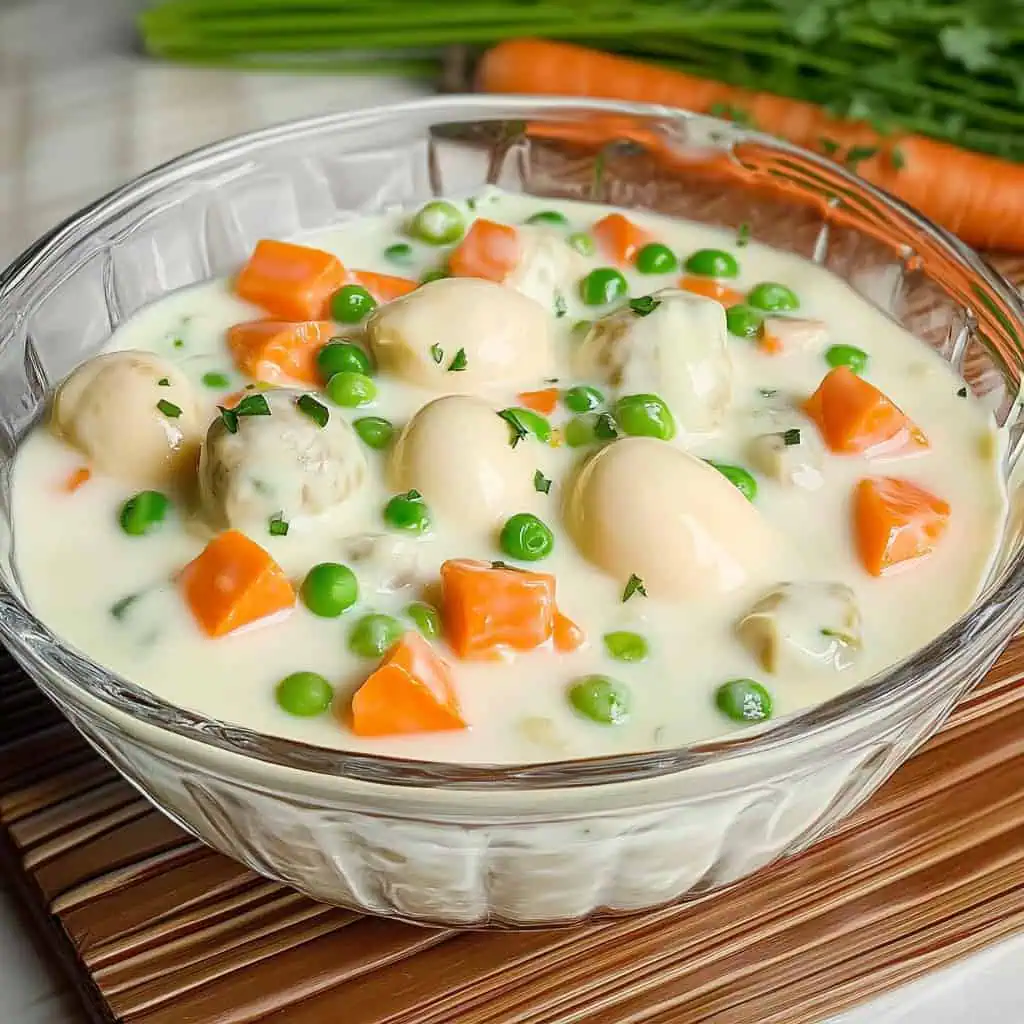
Why You'll Love This Recipe
- 🥚 Perfect blend of textures from creamy sauce and tender-crisp vegetables
- 🌟 Budget-friendly yet elegant enough for special occasions
- 🥕 Customizable with your choice of vegetables
- 👩🍳 Simple ingredients, impressive results
- 💚 Can be made vegetarian-friendly
- 🍚 Versatile - works as a side dish or main course
Ingredients
This recipe brings together quintessential Filipino flavors with practical ingredients that create magic when combined. Quail eggs provide delicate protein and visual appeal, while the trio of vegetables offers contrasting textures and natural sweetness.
Singkamas adds refreshing crunch, fish sauce delivers umami depth, and the cream creates a luxurious binding sauce that elevates this humble dish to special-occasion status while keeping preparation straightforward.
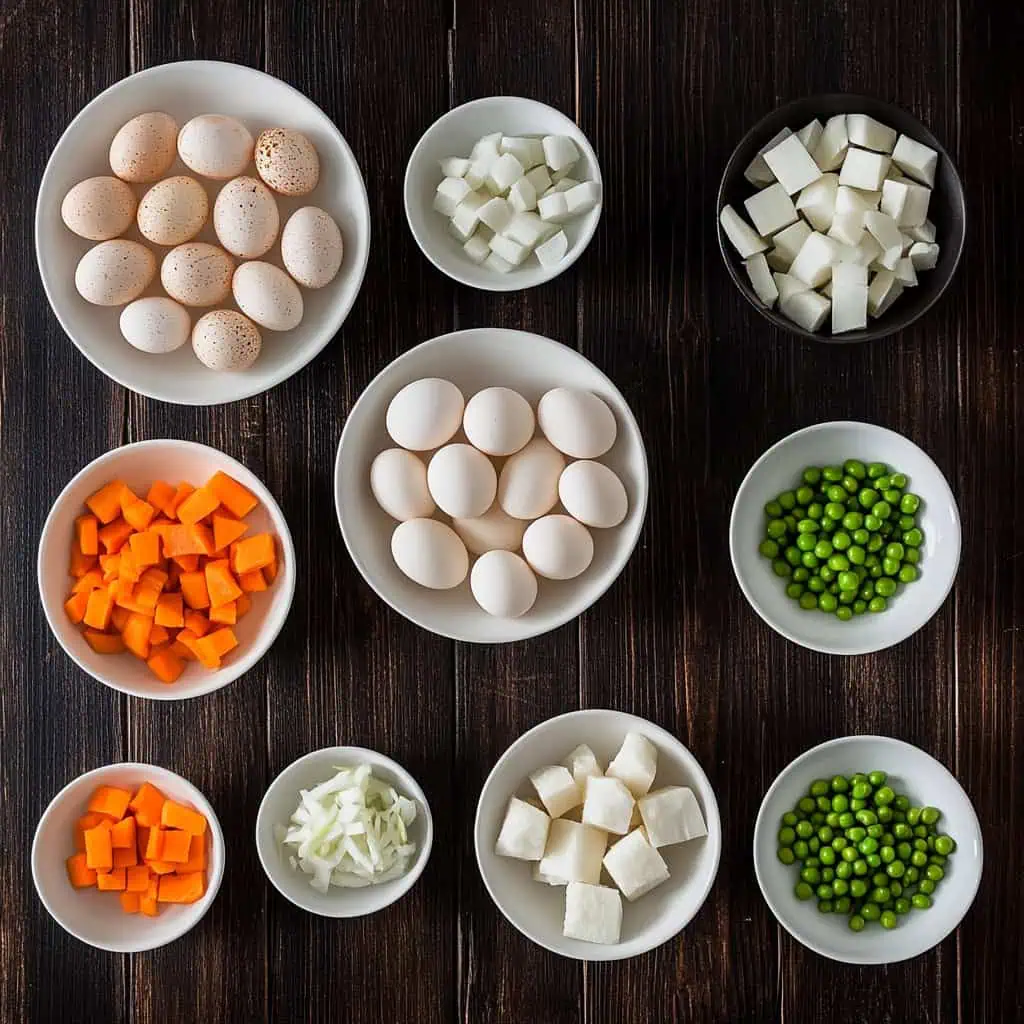
- 12 quail eggs, hard-boiled and peeled
- 1 tablespoon butter
- 1 medium onion, peeled and finely chopped
- 2 cloves garlic, peeled and minced
- 1 tablespoon fish sauce
- 2 large carrots, peeled and cut into ½-inch cubes
- 1 large singkamas (jicama), peeled and cut into ½-inch cubes
- 1 cup frozen sweet peas, thawed
- ½ cup water or chicken stock
- 1 cup table cream or all-purpose cream
- Salt and pepper to taste
- Optional: 1 teaspoon cornstarch mixed with 2 tablespoons water for thickening
Equipment
- Large skillet or kawali: For even heat distribution and sufficient space for vegetables
- Sharp knife and cutting board: Essential for uniform vegetable cuts that ensure even cooking
- Measuring cups and spoons: For precise ingredient measurements
- Heavy-bottomed saucepan: For boiling quail eggs evenly
- Spider strainer: For safely removing eggs from hot water
- Wooden spoon or silicone spatula: For gentle stirring that won't damage delicate vegetables or eggs
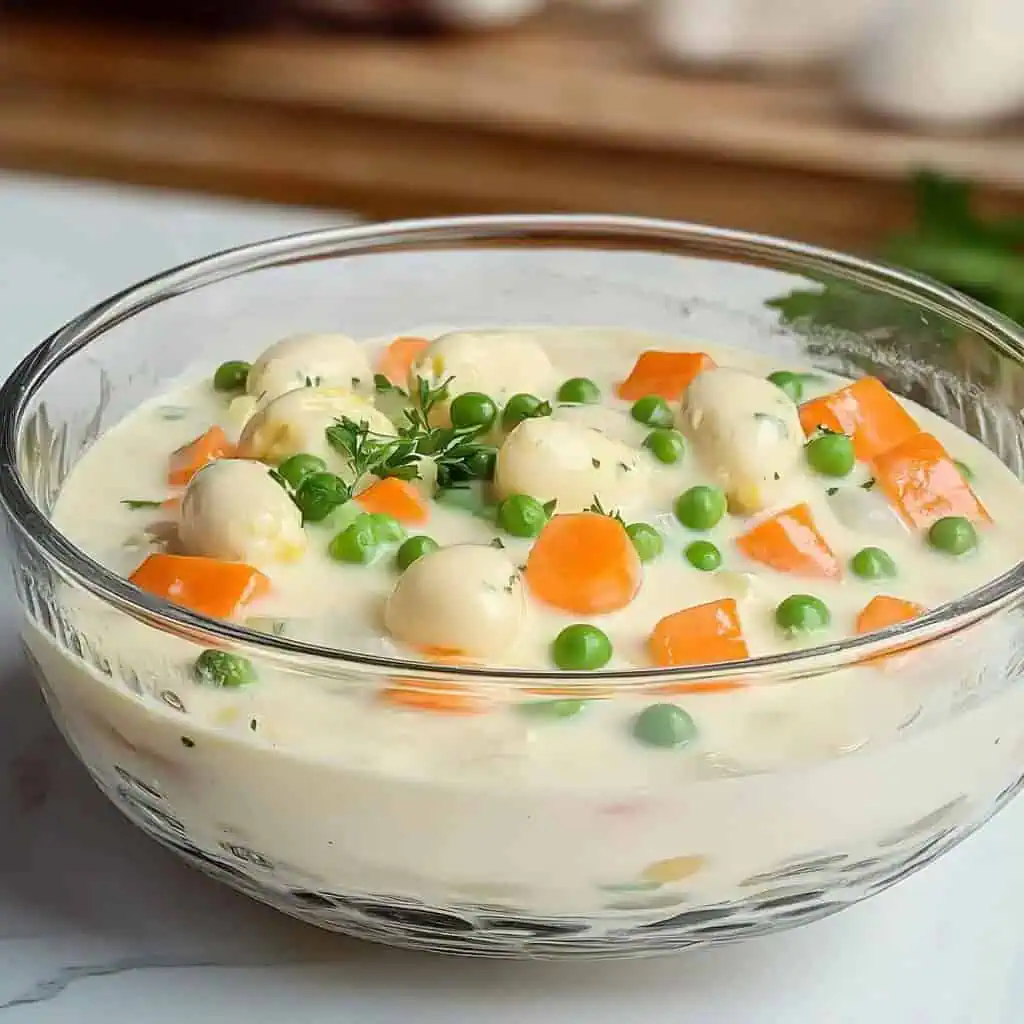
How To Make
- First, bring water to a boil and cook the quail eggs for 3-4 minutes. Transfer them to an ice bath to stop the cooking, then peel and set aside.
- Heat butter in your pan over medium heat until melted. Add your chopped onions and cook until they become clear and soft, about 2-3 minutes. Add minced garlic and cook for another 30 seconds until fragrant. Pour in fish sauce and cook for one more minute.
- Add your diced carrots and singkamas to the pan, stirring them with the onions and garlic. Pour in water or chicken stock. Let it come to a boil, then lower the heat and simmer for 7-10 minutes until the vegetables are tender but still have a slight crunch.
- Add the green peas and stir. Slowly pour in the cream while stirring continuously. Add your peeled quail eggs. Season everything with salt and pepper to taste.
- Let it simmer gently for 2-3 more minutes until the peas and eggs are heated through and the sauce has thickened slightly. If you want a thicker sauce, mix 1 teaspoon of cornstarch with 2 tablespoons of cold water and stir it into the pan.
- Serve hot with steaming white rice. The vegetables should still be slightly crisp, and the sauce should be creamy and smooth.
Remember: Keep the heat low when adding the cream to prevent it from curdling, and don't overcook the vegetables – they should still have a nice bite to them.

Tips from Lola's Kitchen
- Cut with precision: Always cut vegetables uniformly for even cooking and professional presentation
- Fresh is best: Use fresh vegetables when possible for optimal texture, flavor, and vibrant color
- Gentle heat is key: Keep heat low when adding cream to prevent the sauce from breaking or curdling
- Gradual approach: Add cream gradually while continuously stirring to maintain a smooth consistency
- Temperature control: Never boil the dish after adding cream – a gentle simmer is all you need
- Taste as you go: Season gradually and taste throughout the cooking process
- Quality ingredients matter: Use the freshest eggs possible for the best flavor and texture
- Rest before serving: Let the dish rest for 2 minutes before serving to allow flavors to meld perfectly
Substitutions
- Cream: Evaporated milk, coconut cream, or heavy cream mixed with a little milk
- Singkamas: Water chestnuts, turnips, or firm white potatoes
- Quail eggs: Small chicken eggs cut into quarters or halves
- Fish sauce: Light soy sauce or salt for a vegetarian version
- Green peas: Young corn kernels, edamame, or green beans cut into small pieces
- Butter: Olive oil or coconut oil for a different flavor profile
- Chicken stock: Vegetable stock or mushroom broth for vegetarians
Troubleshooting
- Sauce is too thin
- Solution: Add cornstarch slurry (1 teaspoon cornstarch mixed with 2 tablespoon cold water) gradually while stirring
- If no cornstarch is available, continue simmering on low heat until desired thickness is reached
- Vegetables are too soft
- Solution: Reduce cooking time in future preparations
- Quick fix: Add fresh vegetables or briefly blanched ones at the end for texture contrast
- Sauce curdling
- Solution: Lower heat immediately, add 1 tablespoon of cold cream or milk while stirring vigorously
- Prevention: Never let the sauce boil after adding cream
- Dish tastes bland
- Solution: Add fish sauce, salt, or pepper in small increments
- Try adding a pinch of MSG or a splash of lemon juice to enhance flavors
- Eggs breaking apart
- Solution: Handle eggs gently when adding to the dish
- Make sure eggs are properly cooled after boiling before peeling
Storage & Reheating
- Refrigeration: Store in an airtight container for up to 3 days
- Reheating method: Warm gently on stovetop over low heat (around 140°C/285°F)
- Moisture preservation: Add a splash of cream or milk when reheating to restore creaminess
- Stirring technique: Stir occasionally but gently while reheating to avoid breaking eggs
- Not freezer-friendly: This dish does not freeze well as the cream sauce will separate when thawed
- Food safety: Consume within 3 days and always reheat thoroughly to 165°F (74°C)
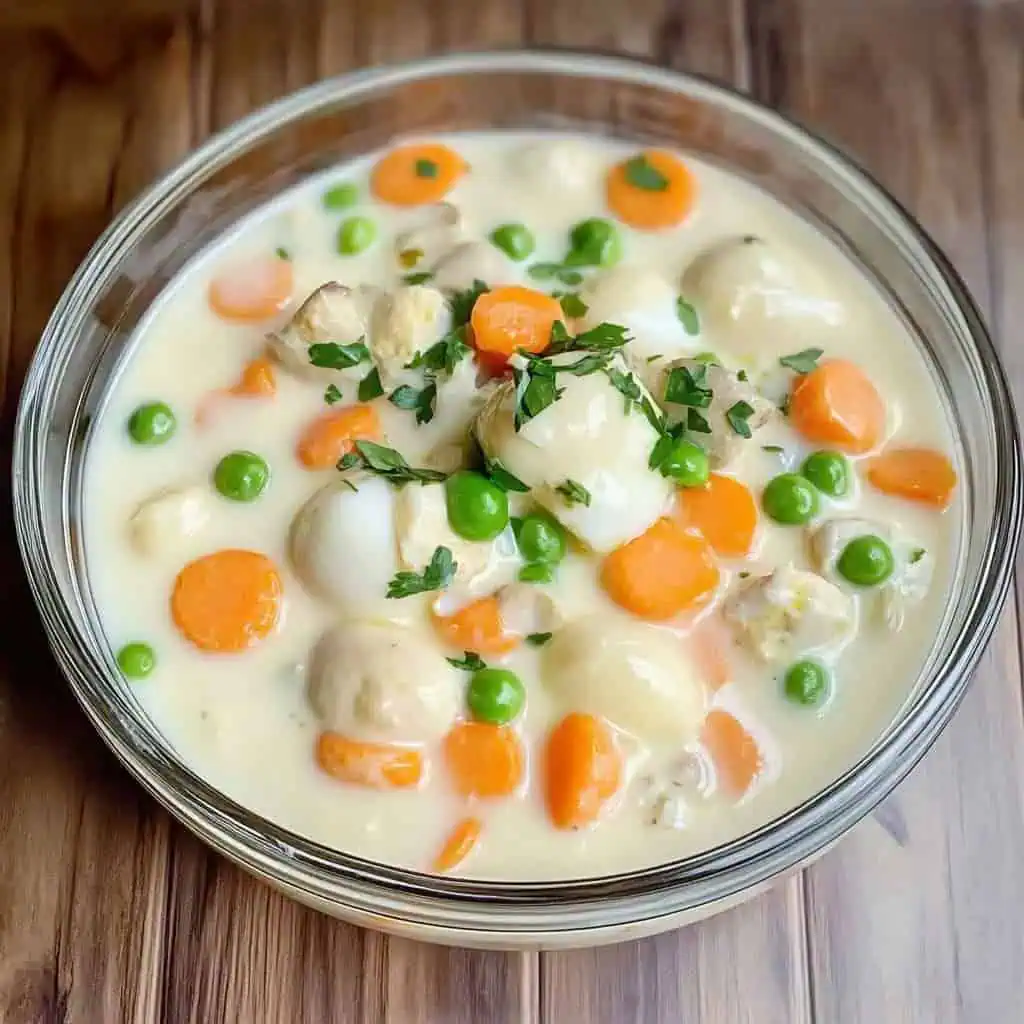
FAQ
Why isn't my sauce thickening?
Ensure you're simmering on low heat. If needed, add a cornstarch slurry (1 teaspoon cornstarch mixed with 2 tablespoon cold water) while stirring continuously.
Can I use regular chicken eggs?
Yes, but cut them into smaller pieces to maintain the dish's elegant appearance and proper sauce-to-egg ratio.
How long can I store Sipo Egg in the refrigerator?
Up to 3 days in an airtight container. The flavor actually improves on the second day!
Can I freeze this dish?
Not recommended as the cream sauce may separate when thawed, affecting both texture and appearance.
Can I make this ahead for a party?
Yes, but slightly undercook the vegetables. Refrigerate and gently reheat adding a splash of fresh cream when ready to serve.
What can I use instead of singkamas if I can't find it?
Water chestnuts, turnips, or firm white potatoes make excellent substitutes while maintaining the crucial textural contrast.
Is this dish spicy?
No, traditional Sipo Egg isn't spicy, but you can add a pinch of red pepper flakes or a small amount of finely diced chili if desired.
My family doesn't like fish sauce. What can I use instead?
You can substitute with light soy sauce or simply use salt and a dash of chicken bouillon for umami flavor.
Related
Looking for other recipes like this? Try these:

Creamy Kapampangan Sipo Egg
Equipment
- Large skillet or kawali (for even heat distribution and sufficient space for vegetables)
- Sharp knife and cutting board (for uniform vegetable cuts)
- Measuring cups and spoons
- Heavy-bottomed saucepan (for boiling quail eggs)
- Spider strainer (pamingwit/for removing eggs)
- Wooden spoon or spatula (for gentle stirring)
Ingredients
For the Base:
- 12 pieces quail eggs itlog ng pugo, hard-boiled and peeled
- 1 tablespoon butter
- 1 medium onion sibuyas, peeled and finely chopped
- 2 cloves garlic bawang, peeled and minced
- 1 tablespoon fish sauce patis
Vegetables:
- 2 large carrots karot, peeled and cut into ½-inch cubes
- 1 large singkamas jicama, peeled and cut into ½-inch cubes
- 1 cup frozen sweet peas gisantes, thawed
- ½ cup water or chicken stock
For the Sauce:
- 1 cup table cream or all-purpose cream
- Salt and pepper asin at paminta, to taste
- Optional: 1 teaspoon cornstarch mixed with 2 tablespoons water for thickening
Instructions
- First, bring water to a boil and cook the quail eggs for 3-4 minutes. Transfer them to an ice bath to stop the cooking, then peel and set aside.
- Heat butter in your pan over medium heat until melted. Add your chopped onions and cook until they become clear and soft, about 2-3 minutes. Add minced garlic and cook for another 30 seconds until fragrant. Pour in fish sauce and cook for one more minute.
- Add your diced carrots and singkamas to the pan, stirring them with the onions and garlic. Pour in water or chicken stock. Let it come to a boil, then lower the heat and simmer for 7-10 minutes until the vegetables are tender but still have a slight crunch.
- Add the green peas and stir. Slowly pour in the cream while stirring continuously. Add your peeled quail eggs. Season everything with salt and pepper to taste.
- Let it simmer gently for 2-3 more minutes until the peas and eggs are heated through and the sauce has thickened slightly. If you want a thicker sauce, mix 1 teaspoon of cornstarch with 2 tablespoons of cold water and stir it into the pan.
- Serve hot with steaming white rice. The vegetables should still be slightly crisp, and the sauce should be creamy and smooth.
- Remember: Keep the heat low when adding the cream to prevent it from curdling, and don't overcook the vegetables – they should still have a nice bite to them.
Tips from Lola's Kitchen
- Always cut vegetables uniformly (pantay-pantay) for even cooking
- Use fresh vegetables when possible for best texture and color
- Add cream gradually while stirring to prevent curdling
- Keep heat low when adding cream to prevent sauce from breaking
- For extra richness, use butter made from carabao's milk
Nutrition
The Story Behind Kapampangan Sipo Egg
In the heart of Pampanga, known throughout the Philippines as the country's culinary capital, Sipo Egg (Ginisang Itlog ng Pugo at Gulay) emerged as a testament to the region's sophisticated approach to cooking. This beloved dish showcases the Kapampangan talent for transforming humble ingredients into elegant creations, a hallmark that has earned the region its prestigious culinary reputation.
The origins of Sipo Egg can be traced to the resourceful home kitchens of Pampanga's ancestral houses, where cooks would prepare special dishes for family gatherings and fiestas. The dish's name "Sipo" is believed to derive from the Spanish influence on Kapampangan cuisine, though its exact etymology remains a subject of friendly debate among food historians and local families who have passed down their versions through generations.
What makes Sipo Egg particularly interesting is its evolution from a practical dish that made use of readily available ingredients – local vegetables and quail eggs from backyard farms – into a refined creation that graces both everyday tables and special occasions. The addition of cream to the dish, a European influence that found its way into Kapampangan cooking through centuries of cultural exchange, elevates the simple vegetable-and-egg combination into something extraordinary.
The dish perfectly embodies the Kapampangan cooking philosophy where technique matters as much as ingredients. The vegetables must maintain their texture, or what locals call "malutong-lutong," while the sauce should be silky smooth – a delicate balance that requires skill and attention. This attention to detail and insistence on proper technique is why Sipo Egg remains a benchmark dish for aspiring home cooks in the region.
Today, Sipo Egg continues to evolve while maintaining its essential character. Modern interpretations might include different vegetable combinations or protein additions, but the core elements – the tender-crisp vegetables, perfectly cooked quail eggs, and that signature cream sauce – remain unchanged, preserving the dish's beloved place in Filipino cuisine.
Whether served in humble home kitchens or upscale Filipino restaurants, Sipo Egg stands as a proud representative of Kapampangan culinary artistry, proving that the most memorable dishes often come from simple ingredients transformed by careful technique and generations of cooking wisdom.
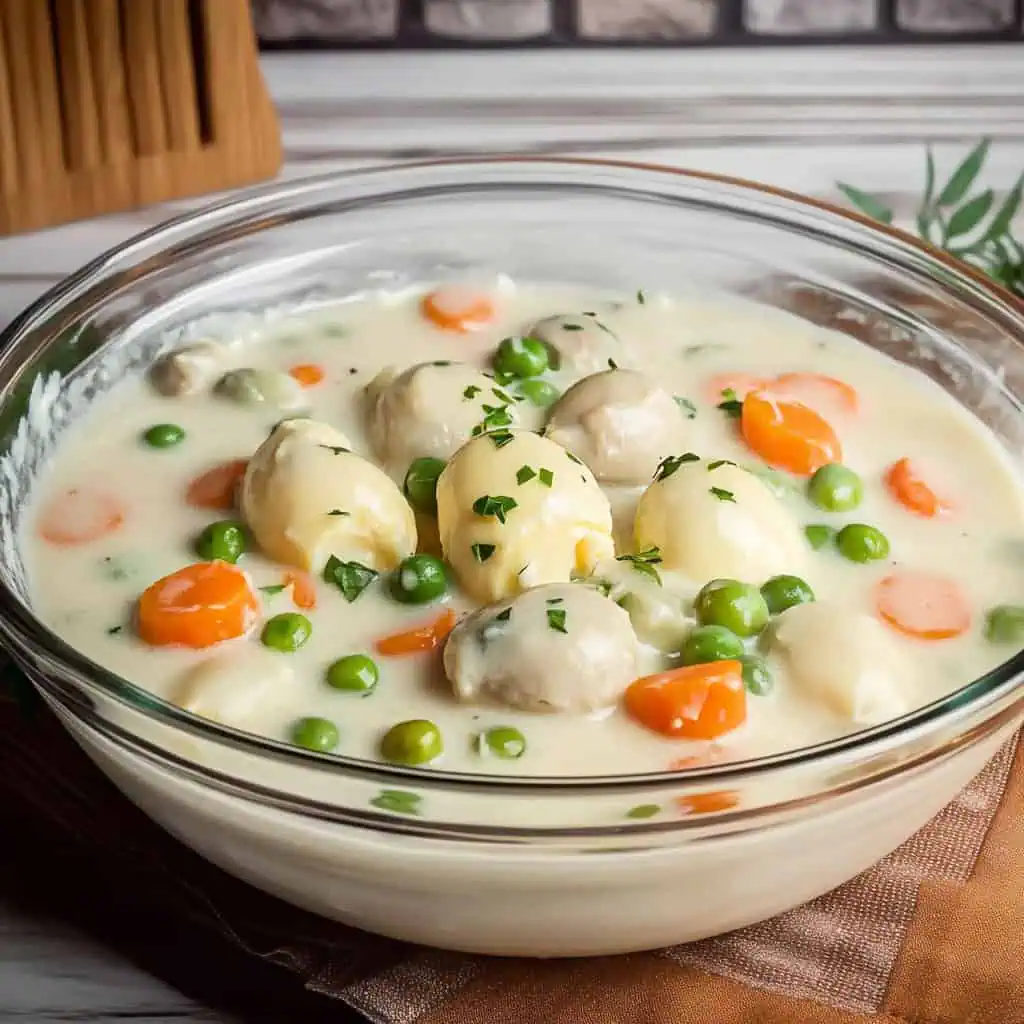





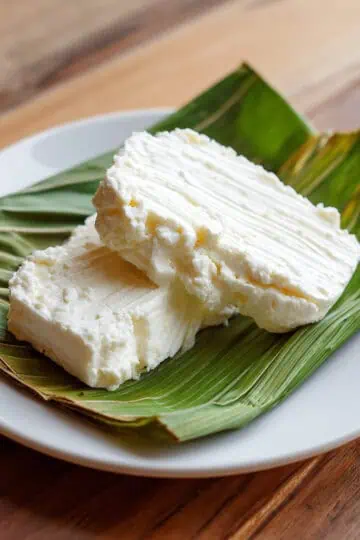
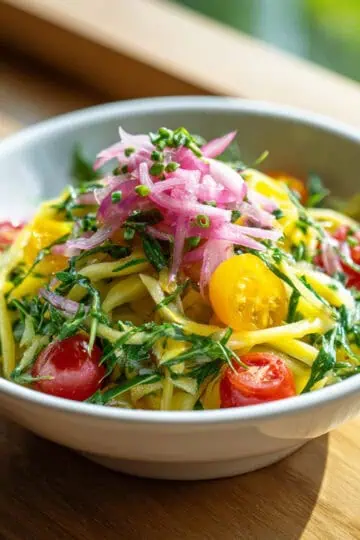

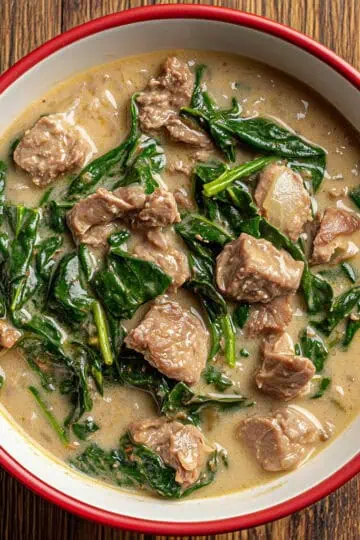
Comments
No Comments